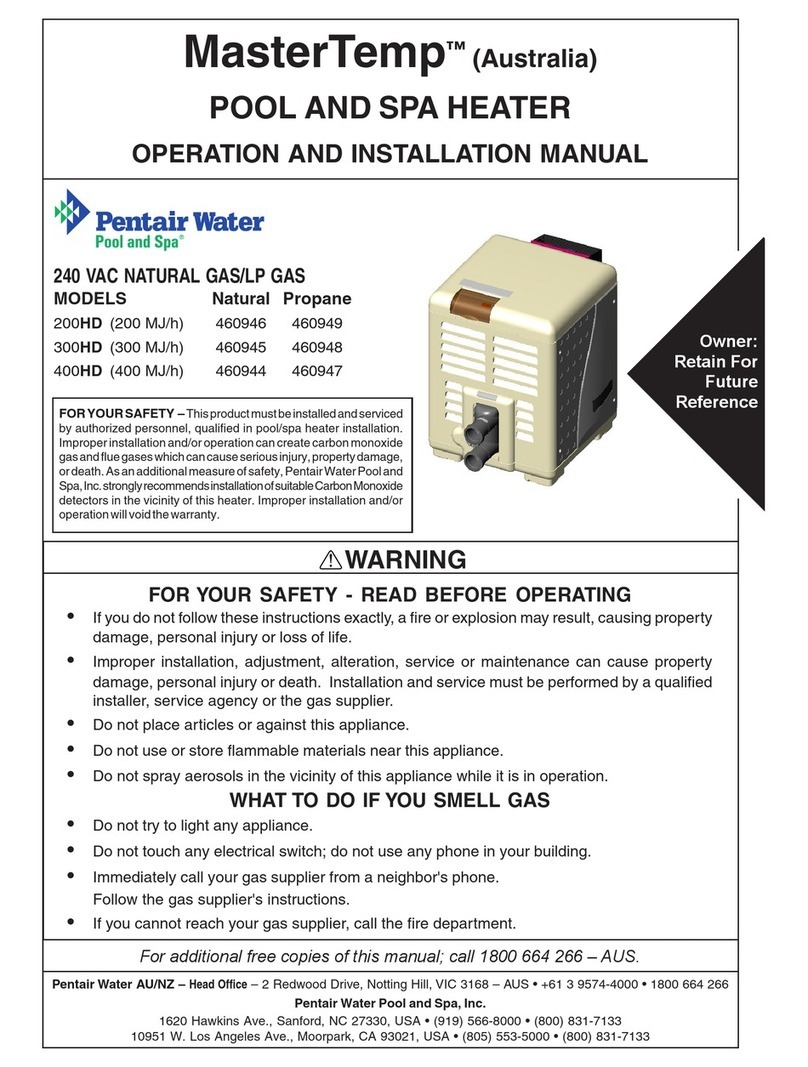Rev. B 2-26-10 P/N 474131
3
Table of Contents
Section 1. Heater Identification Information ....................................................................... 4
Section 2. Introduction .......................................................................................................... 5
ImportantNotices................................................................................................................................................................................. 5
WarrantyInformation ............................................................................................................................................................................ 5
CodeRequirements.............................................................................................................................................................................. 6
ConsumerInformationandSafetyInformation ...................................................................................................................................... 6 - 8
GeneralSpecifications ......................................................................................................................................................................... 8
Section 3. Installation ............................................................................................................. 9
HeaterDescription................................................................................................................................................................................ 9
SequenceofOperation......................................................................................................................................................................... 9
Puttingthe HeaterintoService ............................................................................................................................................................ 9
Specifications ...................................................................................................................................................................................... 10
PlumbingConnections.......................................................................................................................................................................... 11
Valves .................................................................................................................................................................................................. 11
ManualBy-Pass .................................................................................................................................................................................. 11
Water Connections ............................................................................................................................................................................... 12
BelowPoolInstallation ......................................................................................................................................................................... 12
GasConnections ................................................................................................................................................................................. 13
Gas Pipe Sizing ................................................................................................................................................................................... 13
SedimentTrap/DripLeg ....................................................................................................................................................................... 13
Testing GasLeaks andGas Pressure .................................................................................................................................................. 14
GasPressureRequirements ................................................................................................................................................................ 14
OutdoorInstallation .............................................................................................................................................................................. 15
HeaterClearances................................................................................................................................................................................ 15
OutsideInstallationVentingGuidelines ................................................................................................................................................. 16
CorrosiveVaporsandPossibleCauses ................................................................................................................................................ 17
ControlPanelIndexing ......................................................................................................................................................................... 17
FinalInstallationCheck ........................................................................................................................................................................ 17
ElectricalConnections.......................................................................................................................................................................... 18
Fireman’sSwitchConnection/RemoteControlConnections.................................................................................................................. 19
MasterTempWiringDiagram................................................................................................................................................................. 20
ElectricalSchematicLadderDiagram ................................................................................................................................................... 21
Section 4. Operation............................................................................................................... 22
BasicSystemOperation ...................................................................................................................................................................... 22
HSI(Hot-SurfaceIgnition)Lighting/Operation ....................................................................................................................................... 22
OperatingInstructions .......................................................................................................................................................................... 23
To Turn Off Gas toAppliance............................................................................................................................................................... 23
SafetyControls .................................................................................................................................................................................... 24 - 26
Section 5. Troubleshooting ................................................................................................... 27
InitialTroubleshootingandTroubleshootingChart ................................................................................................................................. 27
HeaterWillNotFireTroubleshooting .................................................................................................................................................... 28- 31
LEDDiagnostics .................................................................................................................................................................................. 32- 33
Burner/HeatExchangerTroubleshooting ............................................................................................................................................ 34
Section 6. Maintenance.......................................................................................................... 35
CareandMaintenance.......................................................................................................................................................................... 35
PressureReliefValve........................................................................................................................................................................... 35
After Start-Up ...................................................................................................................................................................................... 36
Spring,FallandWinterOperation ......................................................................................................................................................... 36
MaintainingPoolTemperature ............................................................................................................................................................... 37
EnergySavingTips.............................................................................................................................................................................. 37
ChemicalBalance ................................................................................................................................................................................ 37 - 38
ReplacementParts .............................................................................................................................................................................. 39 - 43




























